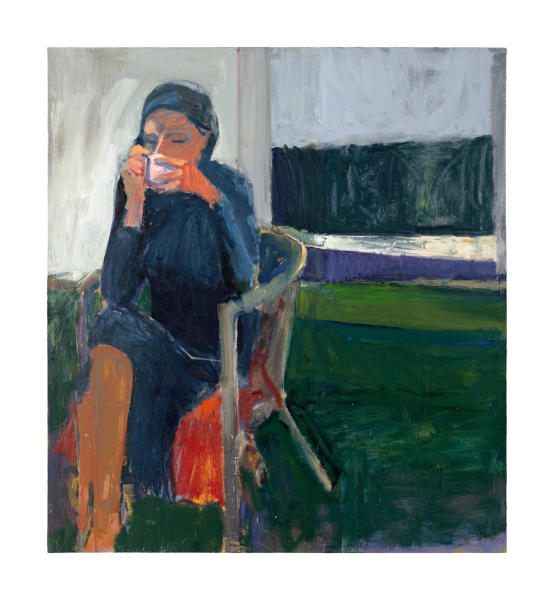Walk: No, too much San Francisco summer (ie, cold and windy)
Distance: 0, Yoga, Pedal
 |
| Edward Hopper, Western Motel, 1957, oil on canvas |
So, Ciwt has been thinking about the relationships between Richard Diebenkorn's and Edward Hopper's art. They aren't accidental.
When Richard Diebenkorn was learning to paint in the 1950's, Abstract Expressionism was the vogue. So much so that, in a determination to be 'with it,' the San Francisco Art Institute recruited several 'AbEx's" from the East Coast and more or less banned realistic painting. The point of Ab Ex was to let the art 'flow from the artist's emotions and soul (or some mystical realm) directly onto the canvas.'
Diebenkorn tried and actually succeeded but never resonated with this expressive method. His natural thinking process was orderly, methodical, architectural; he didn't wear his soul on his sleeve. So he turned to the study of other artists for his guidance - through books, magazines, and especially actual works if he could get his eyes on them.
His first main 'teacher' (although he wasn't aware of it) was Edward Hopper. Diebenkorn encountered Hopper's austere Americana at age 20 when he was in Stanford's art program. And he fell hard. In his own words: I embraced Hopper completely ...It was his use of light and shade and the atmosphere...kind of drenched, saturated with mood, and its kind of austerity. It was the kind of work that just seemed made for me. I looked at it and it was mine.
 |
| Richard Diebenkorn, Girl Looking at Landscape, 1957, oil on canvas |
 | ||
Richard Diebenkorn, Coffee, 1959, oil on canvas
|
 |
| Richard Diebenkorn in front of two of his Ocean Park paintings |

No comments:
Post a Comment